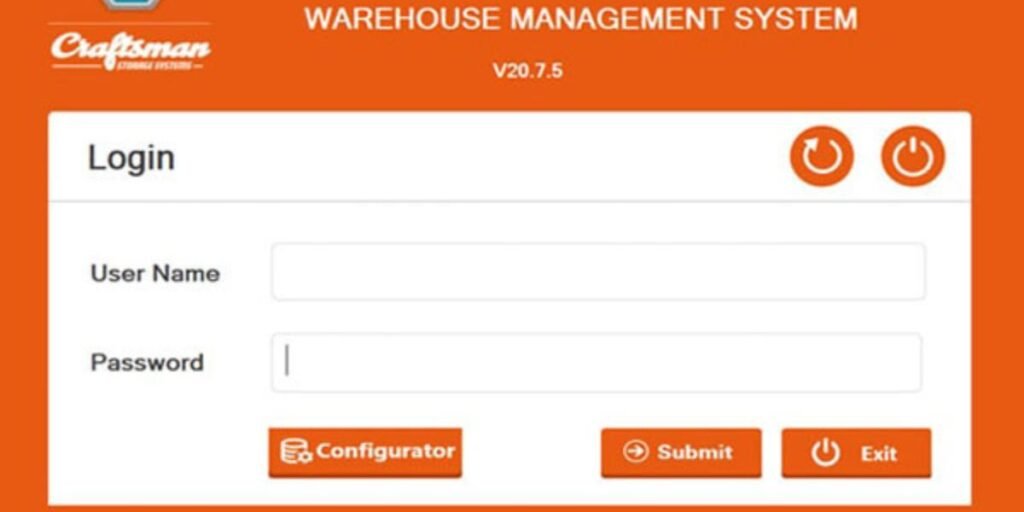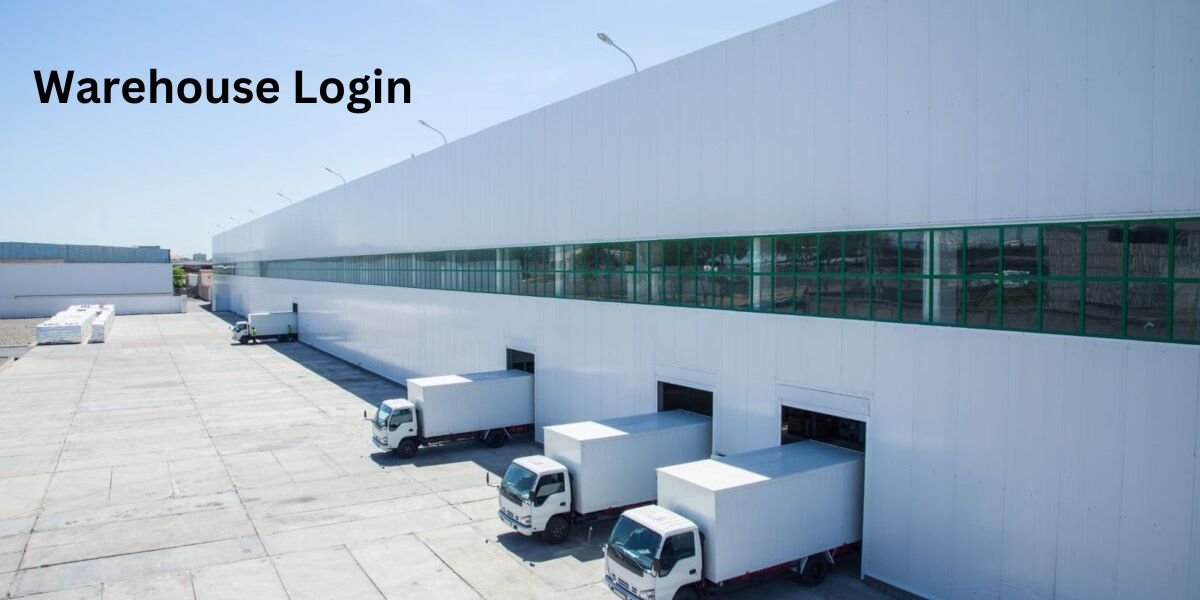In the fast-paced world of warehousing and logistics, efficient systems and processes are crucial to keep operations running smoothly. One such critical system is the warehouse login process, which grants authorized personnel access to key warehouse management platforms. A smooth and secure login system helps businesses manage inventory, track shipments, and ensure overall productivity. In this article, we’ll walk you through the ins and outs of warehouse login, why it matters, and how to optimize the login process for your team.
What is Warehouse Login?
Warehouse login refers to the process through which authorized users access warehouse management software (WMS) or other systems related to warehouse operations. These systems can include inventory management, order tracking, and reporting tools. By using a secure login process, companies ensure that only authorized users can interact with sensitive data and carry out crucial tasks.
A secure warehouse login is vital for preventing unauthorized access to sensitive information, minimizing human error, and streamlining the management of warehouse resources.
Why is Warehouse Login Important?
Warehouse operations often involve large volumes of products, fast-paced work environments, and multiple users accessing a variety of data. Having a reliable login system ensures:
- Security: Prevents unauthorized personnel from accessing the system and tampering with critical data.
- Efficiency: Streamlines access to warehouse tools, improving productivity.
- Accountability: Tracks who logs into the system, providing a clear record for auditing purposes.
Warehouse Login Steps

User Name: This field allows users to enter their username. It is typically used for identification, ensuring that the person logging in has the appropriate credentials.
Password: This is where users input their password. Passwords ensure that the person entering the system is authorized to access it.
Submit Button: After entering the user name and password, users click this button to log in to the system. If the credentials are correct, it will grant access to the system.
Configurator: This option might allow users to configure the system settings or adjust preferences. This is likely a role-based feature where only certain users, such as system administrators, have access.
Exit Button: This button allows users to exit the login screen without logging in. It could also close the application if needed.
Logo and Version Info: The Craftsman logo suggests the specific warehouse system in use. The version number helps users or administrators identify which version of the system is being accessed.
Common Problems Faced with Warehouse Logins
Pain Points in Warehouse Login
While the login process is essential, it can be riddled with challenges. Let’s examine some common pain points warehouse managers and employees face:
1. Forgotten Credentials
Users often forget login credentials due to the infrequency of system use or poor password management, leading to login delays.
2. Slow Login Process
A slow login experience can be frustrating, especially in time-sensitive environments where warehouse employees need to access inventory data quickly.
3. Security Risks
Weak passwords or lack of multi-factor authentication can expose warehouse systems to hacking, leading to data breaches.
4. Poor User Experience
Complex login systems that require multiple steps or difficult-to-understand interfaces can lead to poor user experiences, which in turn can hinder productivity.
The Solution: Optimizing the Warehouse Login Process
How to Improve the Warehouse Login Experience?
1. Implement Multi-Factor Authentication (MFA)
Adding an extra layer of security, such as a second authentication method (e.g., SMS code or biometric scan), ensures that only authorized personnel can access the system. MFA is one of the best ways to safeguard sensitive warehouse data from cyber threats.
2. Use Single Sign-On (SSO)
Single Sign-On (SSO) allows users to access multiple warehouse systems with a single set of login credentials. SSO simplifies the login process by reducing the number of passwords employees need to remember, boosting security and saving time.
3. Adopt Password Management Tools
Encourage employees to use password management tools to securely store and retrieve their login credentials, reducing the frequency of forgotten passwords.
4. Regularly Update Passwords
To maintain security, ensure that all users update their passwords at regular intervals. Create guidelines for strong password usage to minimize the risk of a cyberattack.
5. Monitor Login Attempts
Track failed login attempts to quickly detect and respond to unauthorized access attempts. Some warehouse systems allow for temporary account suspension or alerts if suspicious activity is detected.
Key Features to Look for in Warehouse Login Systems
What Makes an Effective Warehouse Login System?
An ideal warehouse login system should have several key features to ensure smooth operation. Let’s break down the important elements to consider:
| Feature | Description |
|---|---|
| Multi-Factor Authentication | Adds an additional layer of security by verifying users through more than one method. |
| Password Recovery Options | Easy-to-use options for users to reset forgotten credentials. |
| Role-Based Access | Allows only specific roles (e.g., inventory managers, warehouse workers) to access certain functions. |
| Audit Logs | Tracks who logs in and what actions they perform, enabling quick troubleshooting and compliance checks. |
| User-Friendly Interface | Intuitive design that minimizes login errors and enhances the overall user experience. |
How to Set Up Warehouse Login for Your Team
1. Choose the Right Warehouse Management System (WMS)
Start by selecting a Warehouse Management System (WMS) that meets the unique needs of your business. Popular systems include SAP, Oracle, and NetSuite, which offer built-in login and security features.
2. Define User Roles
Before configuring the login system, define the roles of your warehouse staff. This will help determine who needs access to which data and functions. For example, warehouse managers may have full access, while a forklift operator may only need access to inventory tracking.
3. Set Up Login Credentials
Each user will need a unique login ID and password. This ensures that individual actions can be traced back to specific employees for accountability. Additionally, consider using SSO to simplify this process.
4. Test the Login Process
Once you’ve set up the warehouse-login system, run tests to ensure everything works smoothly. Simulate different scenarios, such as multiple failed login attempts, password resets, and access to restricted areas.
5. Train Employees
Once the system is set up, provide training to ensure that all employees know how to use the login system effectively and securely. Consider conducting periodic refresher courses on password management and security best practices.
Conclusion
A seamless and secure warehouse-login system is a cornerstone of efficient warehouse management. By prioritizing security and usability, businesses can streamline their operations, reduce risks, and ensure the smooth flow of goods in and out of the warehouse. By addressing common login challenges, leveraging advanced technologies, and continuously improving the login process, you can maintain a secure and productive warehouse environment.
Read Also: Vels ERP Login: Your Complete Guide to Seamless Access
Warehouse Login FAQs
1. What is a Warehouse Login System?
A warehouse login system is a security protocol that controls access to a warehouse management system (WMS) or other related software. It ensures only authorized users can view and manipulate warehouse data.
2. Why is Multi-Factor Authentication Important for Warehouse Logins?
Multi-Factor Authentication (MFA) is crucial for securing warehouse login systems. It adds an extra layer of protection by requiring users to provide more than just a password—such as a one-time passcode or biometric verification.
3. What Are Common Login Issues in Warehouse Management Systems?
Common issues include forgotten passwords, slow login times, unauthorized access attempts, and poor user interface design. Addressing these problems with modern security measures like MFA and easy-to-use interfaces can improve the overall experience.
4. Can I Recover My Warehouse Login Credentials?
Yes, most warehouse login systems provide password recovery options, including email-based reset links or security questions. Some advanced systems may even offer self-service password management for users.
5. How Can I Ensure My Warehouse Login System is Secure?
To ensure your warehouse login system is secure, implement strong passwords, multi-factor authentication, and regular password updates. Additionally, monitor login attempts and maintain detailed audit logs for compliance and security tracking.











